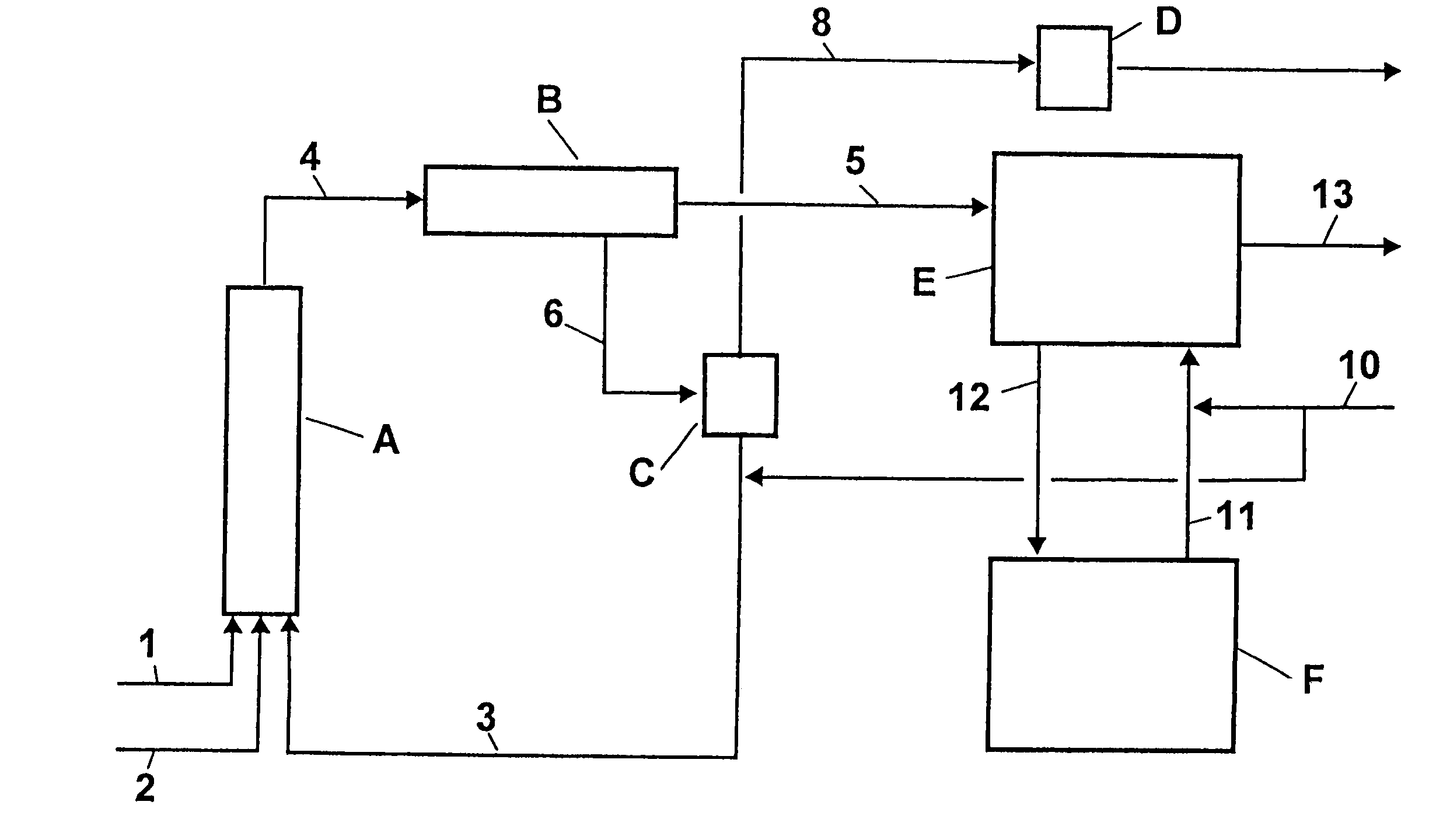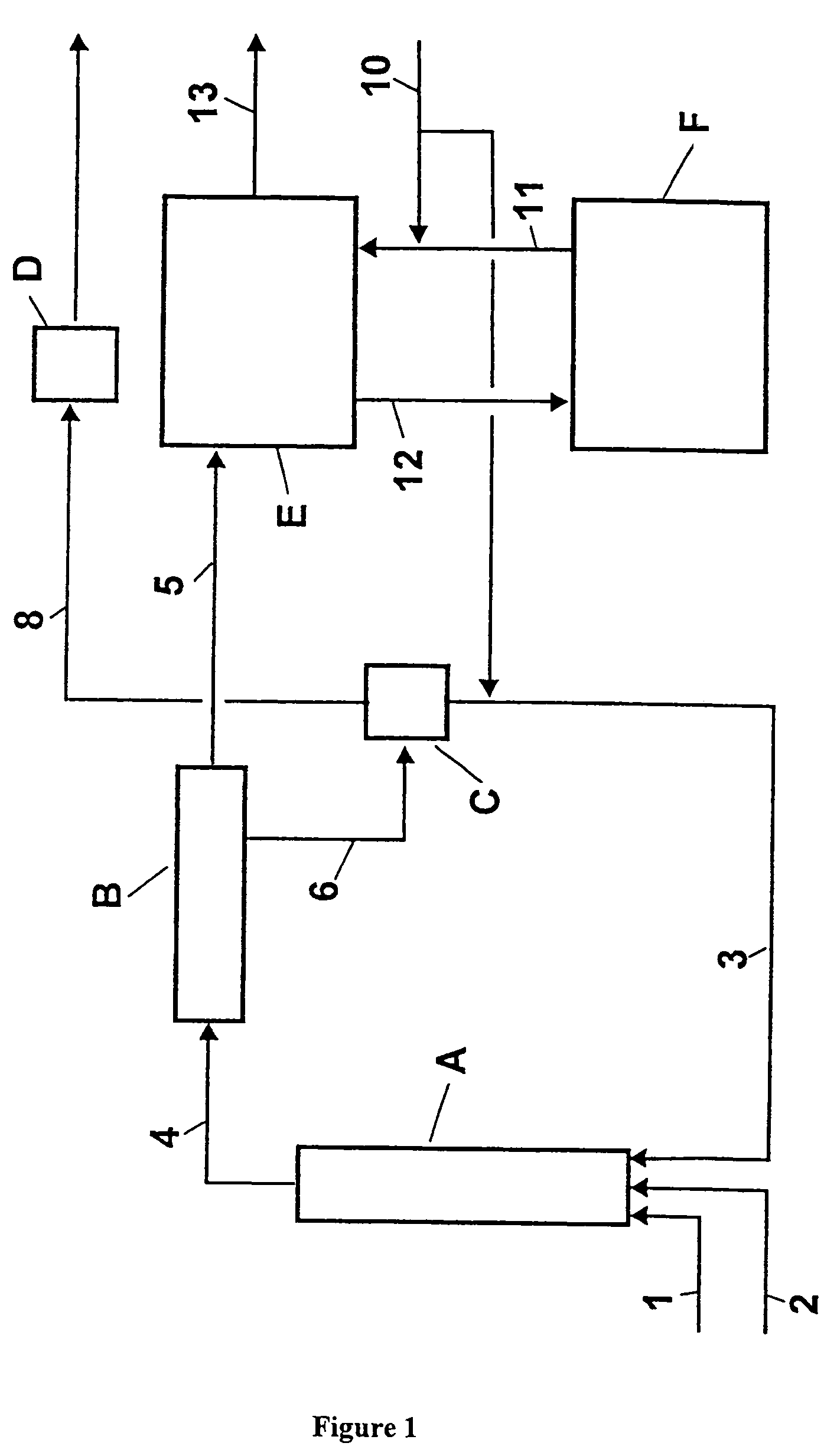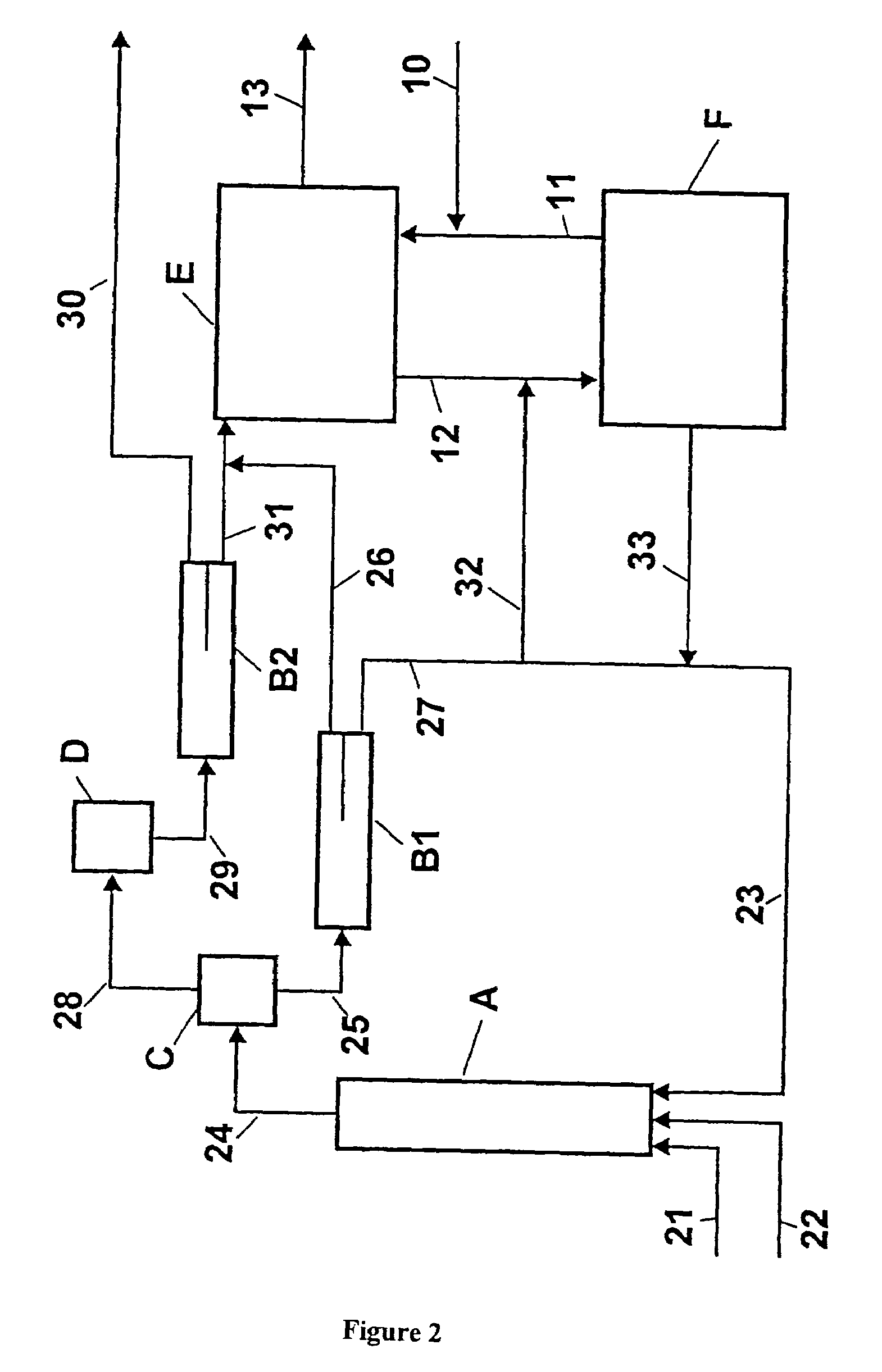Process for the two-step production of dinitrotoluene
a production process and dinitrotoluene technology, applied in the field of two-step production of dinitrotoluene, can solve the problems of high energy cost, inability to permanently stabilize dnt in the presence of by-products, and large expenditure on safety devices
- Summary
- Abstract
- Description
- Claims
- Application Information
AI Technical Summary
Problems solved by technology
Method used
Image
Examples
example 1
[0047]An apparatus according to FIG. 1 was used. The temperatures and compositions of the substance streams are compiled in Table 1.
[0048]In the first stage, operated adiabatically, 50.6 kg / h of toluene (stream 1), 63.0 kg / h of 68 percent by weight (wt. %) nitric acid (stream 2) and 1066.6 kg / h of 76.8 wt. % concentrated waste acid (stream 3) were mixed intensively at the entrance to reactor A. The dimensions for reactor A were as follows: length (L)=5 m, and diameter (D)=25 / 80 mm). In the tubular reactor fitted with perforated discs for redispersion, the temperature rose to 131° C. With an average residence time of 15 min, the reaction mixture (stream 4) was separated in the phase separator B into 78.1 kg / h of an organic phase (stream 5) and 1102.1 kg / h of an aqueous acid phase (stream 6). The 74.5 wt. % waste acid was concentrated to a sulfuric acid content of 76.8 wt. % in the flash evaporator C operated at 40 mbar. For this purpose, slight secondary heating was provided in the b...
example 2
[0052]An apparatus according to FIG. 2 was used. The temperatures and compositions of the substance streams are compiled in Table 2.
[0053]In the first stage, operated adiabatically, 50.6 kg / h of toluene (stream 21), 62.9 kg / h of 68 wt. % nitric acid (stream 22) and 736.0 kg / h of 78.6 wt. % concentrated waste acid (stream 23) were mixed intensively at the entrance to reactor A. The dimensions for reactor A were as follows: L=8 m, D=80 mm. In the tubular reactor fitted with perforated discs for redispersion, the temperature rose to 138° C. The reaction mixture (stream 24) was depressurised via a nozzle into the flash evaporator C operated at 40 mbar, where part of the water and organic components evaporated. The vapors were then condensed in the heat exchanger D. Despite cooling with cold water at 18° C., no deposits formed in the vapor condenser D. The vapor condensate (stream 29) was separated in phase separator B2 into an aqueous phase (21.3 kg / h, stream 30) and an organic phase (5...
example 3
[0057]An apparatus according to FIG. 3 was used. The temperatures and compositions of the substance streams are compiled in Table 3.
[0058]In the first stage, operated adiabatically, 50.6 kg / h of toluene (stream 21), 63.0 kg / h of 68 wt. % nitric acid (stream 22) and 1306.6 kg / h of 82.4 wt. % concentrated waste acid (stream 23) were mixed intensively at the entrance to reactor A. The dimensions of reactor A were as follows: L=5 m, D=80 mm. In the tubular reactor fitted with perforated discs for redispersion, the temperature rose to 132° C. The reaction mixture (stream 24) was depressurised via a nozzle into the flash evaporator C operated at 40 mbar, where part of the water and organic components evaporated. The vapors were then condensed in the heat exchanger D. Despite cooling with cold water at 18° C., no deposits formed in the vapor condenser D. The vapor condensate (stream 29) was separated in phase separator B2 into the aqueous phase (18.3 kg / h, stream 30) and organic phase (56....
PUM
| Property | Measurement | Unit |
|---|---|---|
| Fraction | aaaaa | aaaaa |
| Fraction | aaaaa | aaaaa |
| Fraction | aaaaa | aaaaa |
Abstract
Description
Claims
Application Information
 Login to View More
Login to View More - R&D
- Intellectual Property
- Life Sciences
- Materials
- Tech Scout
- Unparalleled Data Quality
- Higher Quality Content
- 60% Fewer Hallucinations
Browse by: Latest US Patents, China's latest patents, Technical Efficacy Thesaurus, Application Domain, Technology Topic, Popular Technical Reports.
© 2025 PatSnap. All rights reserved.Legal|Privacy policy|Modern Slavery Act Transparency Statement|Sitemap|About US| Contact US: help@patsnap.com



